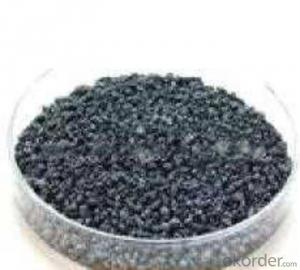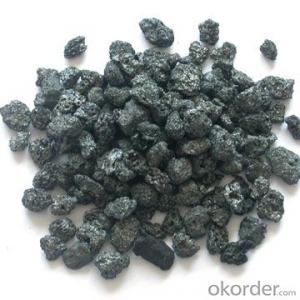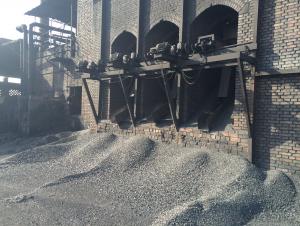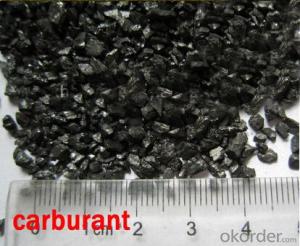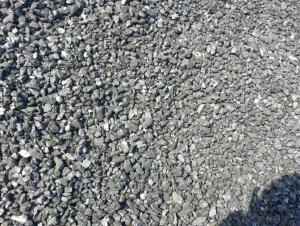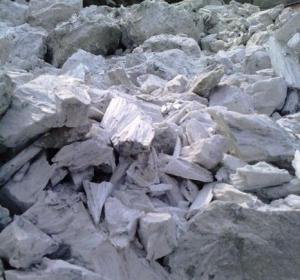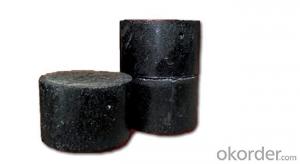FC93% Calcined Anthracite in Steelmaking
- Loading Port:
- Tianjin
- Payment Terms:
- TT OR LC
- Min Order Qty:
- 20 m.t.
- Supply Capability:
- 9000 m.t./month
OKorder Service Pledge
OKorder Financial Service
You Might Also Like
Item specifice
Introduction
Calcined Petroleum Coke comes from delayed coke which extracted from oil refinery. Although Calcined Petroleum Coke contains a little bit higher level of sulfur and nitrogen than pitch coke, the price advantage still makes it widely used during steel-making and founding as a kind of carbon additive/carburant. It is playing more and more crucial role in the industry.
Features
Carbon Additive also called Calcined anthracite Coal, Gas Calcined Anthracite Coal, Carbon Raiser, Recarburizer, injection coke, charging coke and etc.
The main raw material of our Carbon Additive is Ningxia unique high quality Taixi anthracite, with characteristic of low ash and low sulfur. Carbon additive has two main usage, fuel and additive. When being used as the carbon additive of steel-smelting, and casting, the fixed carbon may achieve above 95%.
Best quality Taixi anthracite as raw materials through high temperature calcined at 1200-1250 ℃ for 24 hours by the DC electric calciner with results in eliminating the moisture and volatile matter from Anthracite efficiently, improving the density and the electric conductivity and strengthening the mechanical strength and anti-oxidation, It has good characteristics with low ash, low resistivity, low carbon and high density. It is the best material for high quality carbon products, it is used as carbon additive in steel industry or fuel.
Specifications
PARAMETER UNIT GUARANTEE VALUE | |||||
F.C.% | 95MIN | 94MIN | 93MIN | 92MIN | 90MIN |
ASH % | 4MAX | 5MAX | 6MAX | 7MAX | 8MAX |
V.M.% | 1 MAX | 1MAX | 1.5MAX | 1.5MAX | 1.5MAX |
SULFUR % | 0.5MAX | 0.5MAX | 0.5MAX | 0.5MAX | 0.5MAX |
MOISTURE % | 0.5MAX | 0.5MAX | 0.5MAX | 0.5MAX | 0.5MAX |
Pictures
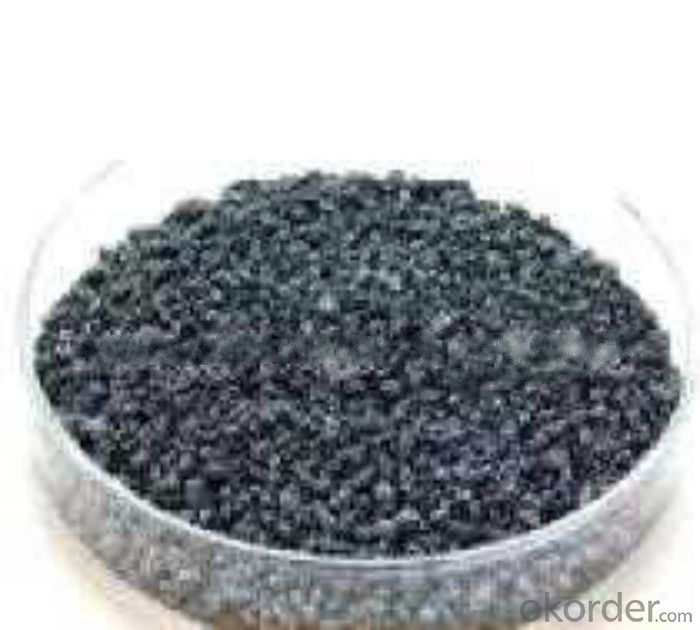
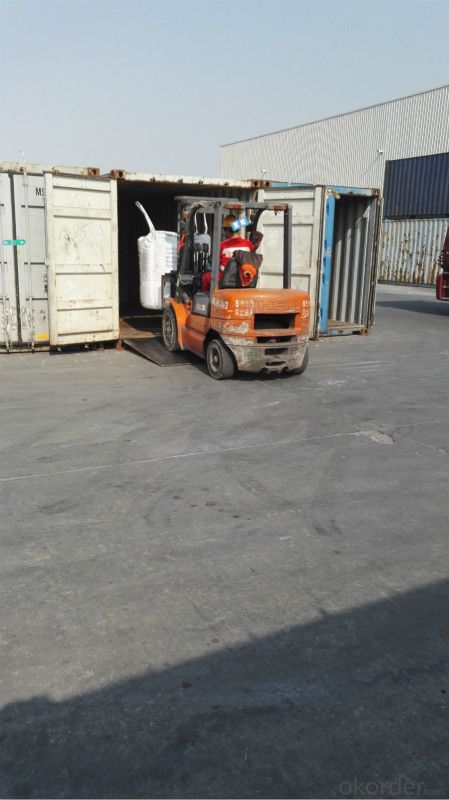

FAQ:
1. What is the packing?
In 25kg bag/ In jumbo bags without pallet/ Two jumbo bags with one pallet/ or as customers’ request
2. What is the production capacity?
10 thousand tons per month
3 What is payment term?
Irrevocable LC at sight/ 20% down payment by T/T and 80% against BL copy byT/T/ or to be discussed
4 What is the service?
We will send sample to the third party(CIQ, CCIC, SGS,BV or to be discussed) for checking, and present the test certificate and loading repot of shipment.
- Q:How to match?Want to breed a batch of roses seedlings, but the seedbed of mud, carbon soil do not know how to get, there is help in this regard...
- Clay soil can not be prepared, it was completed by geological changes over the past ten thousand years. Flower cultivation of soil can be self-made, mud carbon 3 points, coconut bran 2 points, perlite a point. The three proportion is 3; 2; 1.
- Q:What are the impacts of carbon emissions on the stability of mountains?
- Carbon emissions have significant impacts on the stability of mountains. One of the most prominent impacts is the acceleration of global warming, which leads to the melting of glaciers and permafrost. As mountains are home to many glaciers, the increase in temperature causes these glaciers to melt at an alarming rate. This melting can result in the destabilization of mountains, leading to increased landslide and rockfall activity. Furthermore, carbon emissions contribute to the acidification of rainwater. Acid rain can erode the rocks and soil in mountains, weakening their stability. This erosion can lead to slope instability, making mountains more susceptible to landslides and other forms of mass movements. Additionally, carbon emissions contribute to changes in precipitation patterns. Mountain ecosystems heavily rely on a delicate balance of rainfall and snowfall. However, climate change caused by carbon emissions disrupts this balance, leading to altered precipitation patterns. This can result in increased water runoff and a reduction in snowpack, both of which contribute to mountain destabilization. Moreover, carbon emissions have indirect impacts on mountain stability through changes in vegetation patterns. As temperatures rise, plant species may migrate to higher altitudes in search of cooler climates. This can result in the loss of vegetation in lower elevation areas, which play a crucial role in stabilizing slopes and preventing erosion. The absence of plant cover leads to increased soil erosion, leaving mountains more vulnerable to landslides and other erosive processes. In conclusion, carbon emissions have detrimental impacts on the stability of mountains. The acceleration of global warming, acidification of rainwater, altered precipitation patterns, and changes in vegetation patterns all contribute to the destabilization of mountains. It is crucial to reduce carbon emissions and mitigate climate change to protect and preserve these majestic natural formations.
- Q:What is the greenhouse effect?
- Certain gases in the Earth's atmosphere naturally trap heat from the sun, preventing it from escaping back into space. These gases, like carbon dioxide (CO2), methane (CH4), and water vapor, act as a blanket, allowing sunlight to pass through but trapping the heat radiated from the Earth's surface. This process is vital for the Earth's survival as it helps maintain a relatively stable and livable temperature range. Without the greenhouse effect, the Earth's average temperature would be much colder, rendering it uninhabitable for most forms of life. However, human activities such as burning fossil fuels, deforestation, and industrial processes have significantly increased the concentration of greenhouse gases in the atmosphere. This excessive amount of greenhouse gases intensifies the greenhouse effect, leading to global warming. Global warming refers to the gradual increase in the Earth's average temperature, primarily caused by human-induced emissions of greenhouse gases. This temperature rise has far-reaching consequences, including the melting of ice caps, rising sea levels, extreme weather events, and disruption of ecosystems. While the greenhouse effect itself is a natural and necessary process, the enhanced greenhouse effect resulting from human activities contributes to climate change. Therefore, it is crucial to reduce greenhouse gas emissions and adopt sustainable practices to mitigate the adverse effects of global warming.
- Q:How does carbon impact the stability of ecosystems?
- Ecosystem stability heavily relies on the presence of carbon, an indispensable element. Carbon exerts various influences on ecosystems, both directly and indirectly. To begin with, carbon serves as a vital constituent of all living organisms. It plays a pivotal role in the formation of organic compounds like carbohydrates, proteins, and lipids, which are essential for the growth and development of plants and animals. Through the process of photosynthesis, carbon dioxide is converted into glucose by plants, providing organisms with energy. This energy is then transferred through the food chain, sustaining the entire ecosystem. Consequently, the availability of carbon directly affects the productivity and stability of ecosystems. Additionally, carbon dioxide (CO2), a greenhouse gas naturally existing in the Earth's atmosphere, plays a crucial part in regulating the planet's temperature by trapping heat and preventing its escape into space. However, human activities, notably the combustion of fossil fuels, have substantially elevated the concentration of CO2 in the atmosphere, resulting in global warming. This rapid increase in carbon emissions has led to climate change, which poses severe repercussions for ecosystems. Climate change manifests various impacts on ecosystems. As temperatures rise, the distribution and behavior of species are altered, causing changes in their habitats and migration patterns. Consequently, some species may face challenges in adapting, disrupting predator-prey relationships and overall biodiversity within ecosystems. Moreover, climate change can trigger extreme weather events such as hurricanes, droughts, and floods, which can devastate ecosystems. These events disturb resource availability, destroy habitats, and even contribute to the extinction of certain species. Furthermore, heightened levels of carbon dioxide in the atmosphere have resulted in ocean acidification. When CO2 dissolves in seawater, it creates carbonic acid, reducing the ocean's pH level. This acidification negatively impacts marine organisms such as corals, shellfish, and other calcium carbonate-dependent organisms. The diminished availability of carbonate ions in the ocean hampers the formation and maintenance of their structures, ultimately affecting the stability of marine ecosystems. In conclusion, carbon significantly influences ecosystem stability. Its availability and concentration directly impact productivity and energy flow within ecosystems. Moreover, human-induced carbon emissions have triggered climate change and ocean acidification, posing substantial threats to ecosystem balance and functioning. Therefore, comprehending and managing carbon levels in the environment is crucial for preserving the stability and sustainability of ecosystems.
- Q:What is the relationship between carbon emissions and air pollution?
- The close connection between carbon emissions and air pollution cannot be understated. Burning fossil fuels, such as coal, oil, and natural gas, is the main source of carbon emissions, which release substantial amounts of carbon dioxide (CO2) into the atmosphere. This surge in CO2 levels significantly contributes to the greenhouse effect, which traps heat in the atmosphere and leads to global warming. On the other hand, air pollution refers to the presence of harmful substances in the air that can be detrimental to both human health and the environment. Although carbon dioxide itself is not directly toxic to humans, it plays a critical role in the formation of other air pollutants. One of the primary consequences of increased carbon emissions is the creation of fine particulate matter (PM2.5) and ground-level ozone (O3). These pollutants are formed through intricate chemical reactions involving CO2 and other pollutants like nitrogen oxides (NOx) and volatile organic compounds (VOCs). PM2.5 and O3 are notorious for causing respiratory problems, cardiovascular diseases, and various other health issues. Moreover, carbon emissions also contribute to the development of other air pollutants, such as sulfur dioxide (SO2), nitrogen oxides (NOx), and heavy metals. These pollutants are emitted alongside CO2 during diverse industrial processes, power generation, and transportation. They can have severe health consequences, including respiratory diseases, asthma, and even cancer. The reduction of carbon emissions plays a pivotal role in combatting air pollution. By transitioning to cleaner energy sources, such as renewables, and enhancing energy efficiency, we can significantly decrease the amount of CO2 and other pollutants released into the atmosphere. The implementation of stricter regulations and the adoption of cleaner technologies in industries and transportation can also aid in the reduction of air pollution and its associated health risks. In conclusion, the connection between carbon emissions and air pollution is inseparable. The release of CO2 and other pollutants from burning fossil fuels contributes to global warming and the formation of harmful air pollutants. Addressing the issue of carbon emissions is imperative in mitigating air pollution and safeguarding human health and the environment.
- Q:What is carbon neutral agriculture?
- Carbon neutral agriculture refers to a farming practice that aims to balance the amount of carbon released into the atmosphere with the amount of carbon sequestered or removed from the atmosphere. It involves adopting sustainable and environmentally friendly practices that minimize greenhouse gas emissions and promote the absorption of carbon dioxide from the atmosphere. There are several key practices involved in achieving carbon neutrality in agriculture. One of them is reducing fossil fuel usage by employing renewable energy sources, such as solar or wind power, for farm operations. This helps to decrease emissions associated with machinery, equipment, and transportation. Another important aspect is managing soil health and enhancing carbon sequestration. This can be achieved through practices like cover cropping, crop rotation, and conservation tillage. These methods help to increase organic matter in the soil, which in turn contributes to carbon storage. Additionally, carbon neutral agriculture encourages the use of organic fertilizers and natural pest control methods, reducing the need for synthetic chemicals that can emit harmful greenhouse gases. Offsetting carbon emissions is another strategy employed in carbon neutral agriculture. This can involve planting trees on the farm or in nearby areas to absorb carbon dioxide from the atmosphere. It can also include participating in carbon credit programs, where farmers receive compensation for implementing sustainable practices that reduce emissions. Overall, carbon neutral agriculture is a holistic approach that aims to minimize the carbon footprint of farming operations. By reducing emissions and maximizing carbon sequestration, it helps to mitigate climate change and promote a more sustainable agricultural system.
- Q:What is fullerene?
- Fullerene refers to a molecule made entirely of carbon atoms, arranged in a unique structure resembling a hollow cage or sphere. It is a form of allotrope of carbon, alongside graphite and diamond. The most common and well-known fullerene is called buckminsterfullerene, or simply C60, which consists of 60 carbon atoms arranged in a soccer ball-like shape. Fullerenes can also vary in size, ranging from as few as 20 carbon atoms to several hundred. They can be found naturally in soot and formed through various methods, such as laser ablation or chemical vapor deposition. Due to their distinctive structure, fullerenes possess remarkable properties, including high strength, low density, and excellent electrical and thermal conductivity. They have found applications in various fields, including nanotechnology, electronics, medicine, and materials science.
- Q:How does carbon affect the migration patterns of animals?
- The migration patterns of animals are significantly influenced by carbon emissions and the subsequent increase in greenhouse gases. One of the main ways in which carbon affects migration is through climate change. As levels of carbon dioxide rise, the Earth's temperature also increases, leading to changes in weather patterns and the timing of seasons. These alterations can disrupt the natural cues and signals that animals depend on to initiate migration. For certain species, migration is triggered by changes in temperature, daylight hours, or the availability of food sources. However, with climate change, these cues may become inconsistent or modified, resulting in confusion and disruption in migration patterns. Migratory birds, for instance, rely on the presence of insects and other food sources during their journey. Nevertheless, fluctuations in temperatures and shifts in the life cycles of plants and insects can impact the timing and availability of these resources, potentially leading to food shortages and hindering their ability to successfully complete migrations. Furthermore, carbon emissions have caused changes in habitat and ecosystems that further influence migration patterns. Increasing temperatures and alterations in precipitation patterns can change the distribution and abundance of plant species. Consequently, this can affect the availability of food and shelter for migratory animals. Some species may find that their traditional breeding or feeding grounds are no longer suitable due to these changes, compelling them to modify their migration routes or patterns. In addition, carbon emissions also contribute to the melting of polar ice caps and the subsequent rise in sea levels. This directly affects marine species that rely on specific breeding grounds or feeding areas. As their habitats shrink or disappear, these animals may be compelled to migrate to new areas or face extinction. Overall, the rise in carbon emissions and resulting climate change have profound effects on the migration patterns of animals. Disruptions in weather patterns, modified cues for migration, changes in habitat, and shifts in food availability all contribute to the challenges faced by migratory species. Understanding and mitigating the impact of carbon on migration is essential to ensure the survival and well-being of these animals in a rapidly changing world.
- Q:Does anyone know what the definition of carbon storage is in ecology? Thank you
- 1, store it in a certain range.2 carbon storageAbout 2. No need to explain1 of the words is "popular carbon dioxide storage".. Current storage practices are generally to collect CO2 in the atmosphere and inject gas into the ground
- Q:What does carbon nanotubes (5,5) in (5,5) mean?
- You can imagine will find a layer of carbon atoms on the plane (5,5) points, grabbed (5,5) and (0,0), the whole plane to roll the overlap is not only two tubular carbon nanotubes (5,5). So the (n, m) and the diameter of the nanotubes have a close relationship.
1. Manufacturer Overview |
|
|---|---|
| Location | |
| Year Established | |
| Annual Output Value | |
| Main Markets | |
| Company Certifications | |
2. Manufacturer Certificates |
|
|---|---|
| a) Certification Name | |
| Range | |
| Reference | |
| Validity Period | |
3. Manufacturer Capability |
|
|---|---|
| a)Trade Capacity | |
| Nearest Port | |
| Export Percentage | |
| No.of Employees in Trade Department | |
| Language Spoken: | |
| b)Factory Information | |
| Factory Size: | |
| No. of Production Lines | |
| Contract Manufacturing | |
| Product Price Range | |
Send your message to us
FC93% Calcined Anthracite in Steelmaking
- Loading Port:
- Tianjin
- Payment Terms:
- TT OR LC
- Min Order Qty:
- 20 m.t.
- Supply Capability:
- 9000 m.t./month
OKorder Service Pledge
OKorder Financial Service
Similar products
New products
Hot products
Hot Searches
